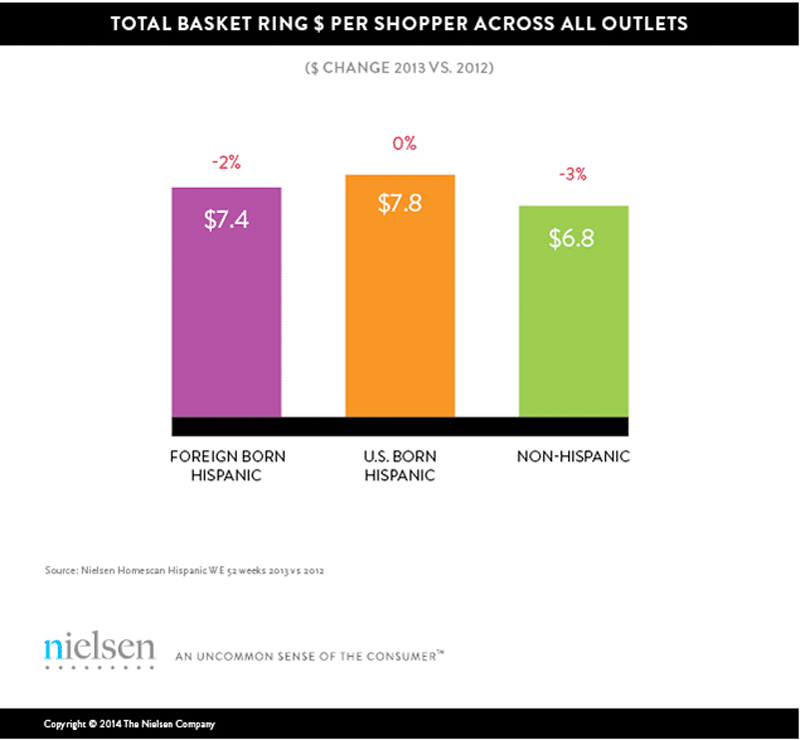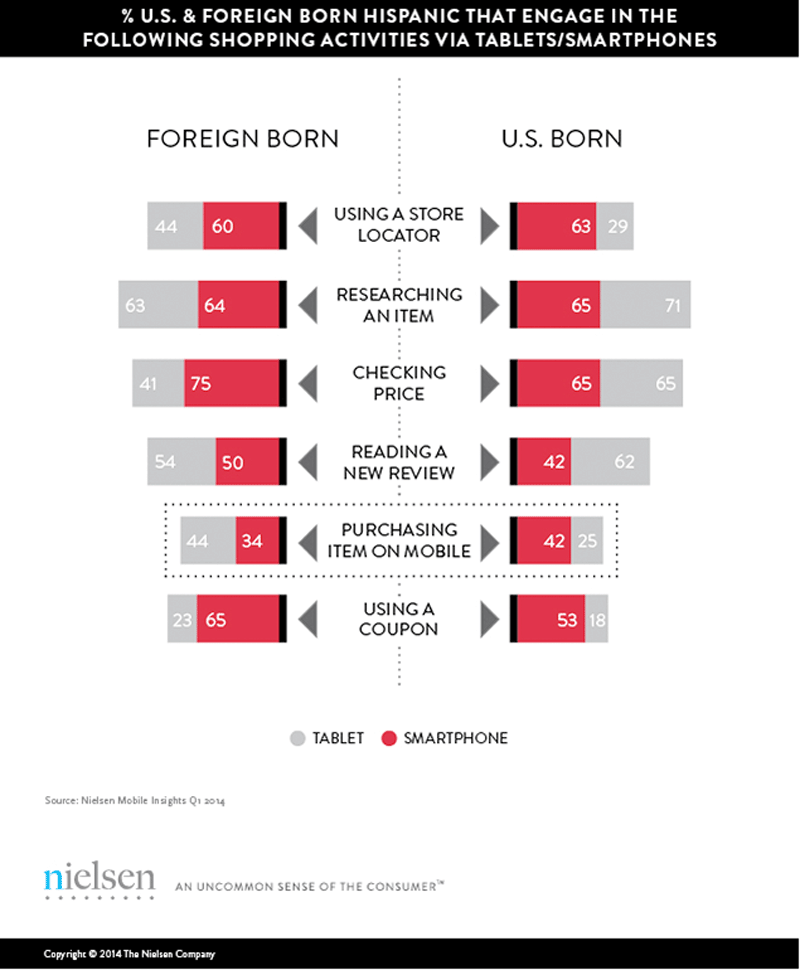Engaging the Evolving Hispanic Consumers: A Look at Two Distinct Sub-Groups [INSIGHT]
September 27, 2014
![]() By Eva Gonzalez, Executive Director, Diverse Consumer Insights, and Maria Monistere, Senior Manager, Hispanic Market
By Eva Gonzalez, Executive Director, Diverse Consumer Insights, and Maria Monistere, Senior Manager, Hispanic Market
Hispanics in the U.S. have a current spending power of about $1.4 trillion, but getting to know this diverse group can be challenging without the right insight. That’s because the aggregate Hispanic population comprises several sub-groups, and the various characteristics of these sub-groups are affecting consumer behavior and engagement opportunities.
To better understand the nuances within the larger group, Nielsen recently analyzed the buying and viewing behaviors of U.S.-born and foreign-born Hispanics and identified notable differences between these two connected sub-groups.
So rather than trying to approach the group as a whole, brands would be better served by going back to the basics and learning about the distinctions and nuances between each sub-segment of the Latin consumer market. The need to distinguish is becoming more important because the cohorts are growing. That means the need for in-depth understanding of the commonalities and differences among them and their consumption patterns is rising in parallel.
While the overall Hispanic market is diverse, U.S.-born Hispanics represent an undeniably strong sub-group. Today, they represent 64% of total Hispanics. In addition to this group’s size, its members are rapidly accelerating into adulthood. Annually, about 800,000 U.S.-born Hispanics turn 18 years old. But to truly understand this segment, we need to examine it alongside the foreign-born Hispanic group.
In terms of consumer attributes, the basic demographics of these two groups, such as age, household size and income, differ significantly. U.S.-born Hispanics are younger overall. Their median age is 18, while the median age of foreign-born Hispanics is closer to that of non-Hispanics: 40 and 42, respectively. When considering household size, larger households are more often led by foreign-born Hispanics, while smaller households are often led by a U.S.-born Hispanics. Households led by U.S.-born Hispanics also tend to earn more. Across households, 52% of U.S.-born homes earn at least $50,000 each year, compared with 33% of homes led by foreign-born Hispanics.

The differences in demographics are reflected across purchasing behavior, as Nielsen data shows how these two sub-groups spend differently. Overall, Hispanic consumers spend more on total basket than non-Hispanics, reaffirming the growth opportunity this group represents for consumer packaged goods (CPG) manufacturers and retailers. U.S.-born Hispanic homes lead this spending, as they shop more frequently than their foreign-born and non-Hispanic counterparts.
This greater shopping frequency is probably because U.S.-born homes have higher incomes than the Hispanic-born homes. And though foreign-born households are spending less annually and making fewer trips to brick-and-mortar outlets, they’re spending more per trip than their U.S.-born counterparts – highlighting their remarkable value. While this insight highlights that larger families will therefore purchase larger baskets, marketers will also need to better understand these families because retailers are seeing them less often.

AMBI-CULTURAL, MULTILINGUAL AND TECH-SAVVY
Latinos are ambicultural and can seamlessly shift between the two cultures without thinking. This is evidenced by the fact that 35% of Hispanic homes now speak English and Spanish within the home, up 87% from 2013. Comparatively, only 22% speak one language. This means that marketers can’t just convey their messages in Spanish or English. They need to communicate in both.
And communication transcends language. It’s also a key tech consideration for brands, as smartphones have become indispensable to Hispanics. Seventy-nine percent of them own one, almost 10% more than non-Hispanics (70%). Connected Hispanics, those who own at least a smartphone or a tablet), spend time on their devices before they make purchase decisions as well as during their shopping activities. While U.S.- and Hispanic-born groups are engaging in these activities, the devices serve a different purpose for each. Forty-two percent of U.S.-born consumers use smartphones to make purchases, compared with 34% of foreign-born consumers. Foreign-born Hispanics, however, are more likely to use their tablets to make a purchase: 44%, compared with 25% of U.S.-born Hispanics.

While the opportunities are immense, transforming them into winning strategies requires more than a general knowledge about these two sub-segments. There are demographic differences, and the contrasting consumption behaviors are relevant for brands seeking to better meet their needs.






























